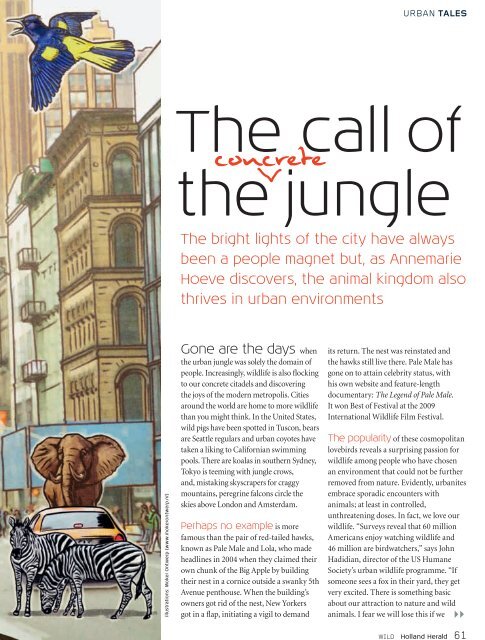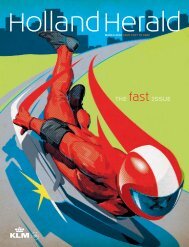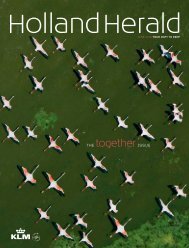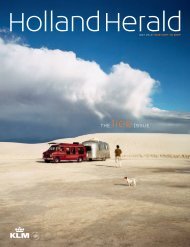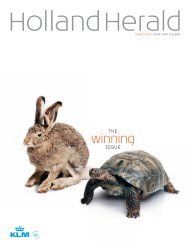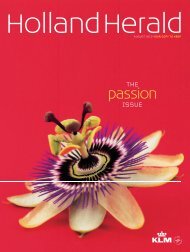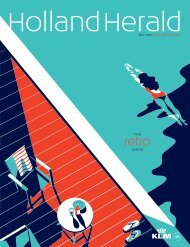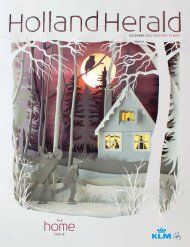january-2010
january-2010
january-2010
Create successful ePaper yourself
Turn your PDF publications into a flip-book with our unique Google optimized e-Paper software.
Illustrations: Moker Ontwerp (www.mokerontwerp.nl) The<br />
Gone are the days when<br />
the urban jungle was solely the domain of<br />
people. Increasingly, wildlife is also fl ocking<br />
to our concrete citadels and discovering<br />
the joys of the modern metropolis. Cities<br />
around the world are home to more wildlife<br />
than you might think. In the United States,<br />
wild pigs have been spotted in Tuscon, bears<br />
are Seattle regulars and urban coyotes have<br />
taken a liking to Californian swimming<br />
pools. There are koalas in southern Sydney,<br />
Tokyo is teeming with jungle crows,<br />
and, mistaking skyscrapers for craggy<br />
mountains, peregrine falcons circle the<br />
skies above London and Amsterdam.<br />
Perhaps no example is more<br />
famous than the pair of red-tailed hawks,<br />
known as Pale Male and Lola, who made<br />
headlines in 2004 when they claimed their<br />
own chunk of the Big Apple by building<br />
their nest in a cornice outside a swanky 5th<br />
Avenue penthouse. When the building’s<br />
owners got rid of the nest, New Yorkers<br />
got in a fl ap, initiating a vigil to demand<br />
URBAN TALES<br />
call of<br />
the jungle<br />
The bright lights of the city have always<br />
been a people magnet but, as Annemarie<br />
Hoeve discovers, the animal kingdom also<br />
thrives in urban environments<br />
its return. The nest was reinstated and<br />
the hawks still live there. Pale Male has<br />
gone on to attain celebrity status, with<br />
his own website and feature-length<br />
documentary: The Legend of Pale Male.<br />
It won Best of Festival at the 2009<br />
International Wildlife Film Festival.<br />
The popularity of these cosmopolitan<br />
lovebirds reveals a surprising passion for<br />
wildlife among people who have chosen<br />
an environment that could not be further<br />
removed from nature. Evidently, urbanites<br />
embrace sporadic encounters with<br />
animals; at least in controlled,<br />
unthreatening doses. In fact, we love our<br />
wildlife. “Surveys reveal that 60 million<br />
Americans enjoy watching wildlife and<br />
46 million are birdwatchers,” says John<br />
Hadidian, director of the US Humane<br />
Society’s urban wildlife programme. “If<br />
someone sees a fox in their yard, they get<br />
very excited. There is something basic<br />
about our attraction to nature and wild<br />
animals. I fear we will lose this if we<br />
WILD Holland Herald 61


